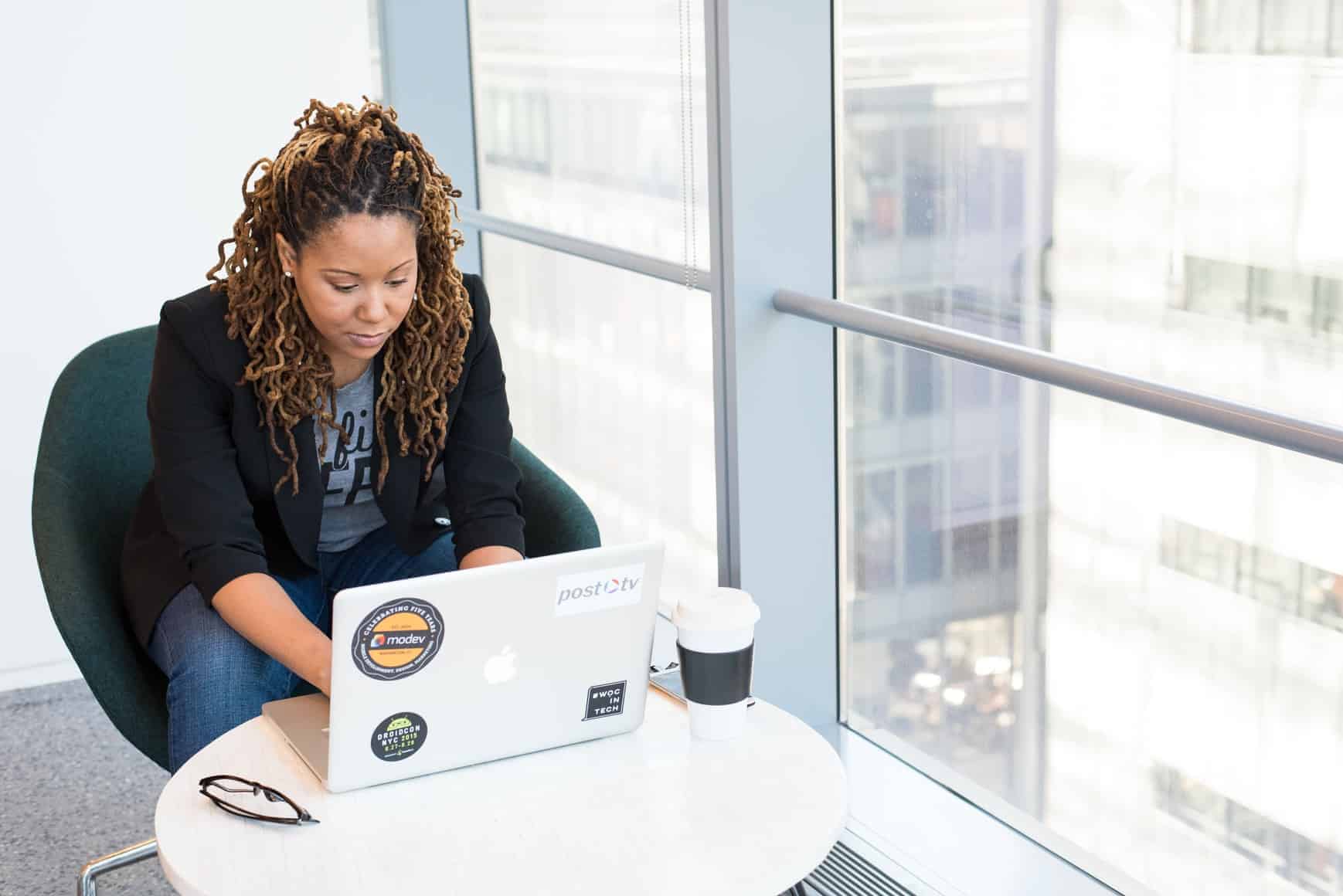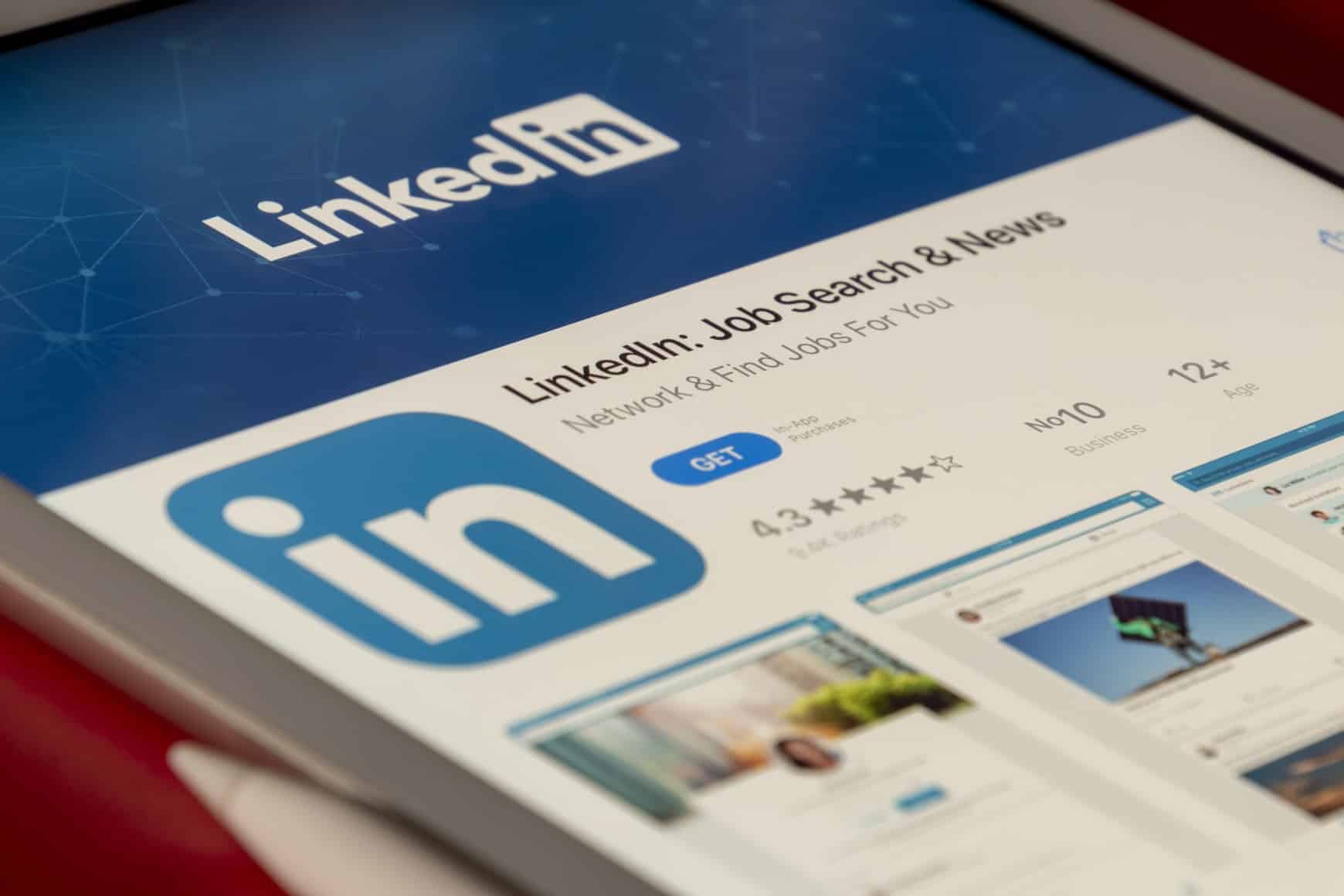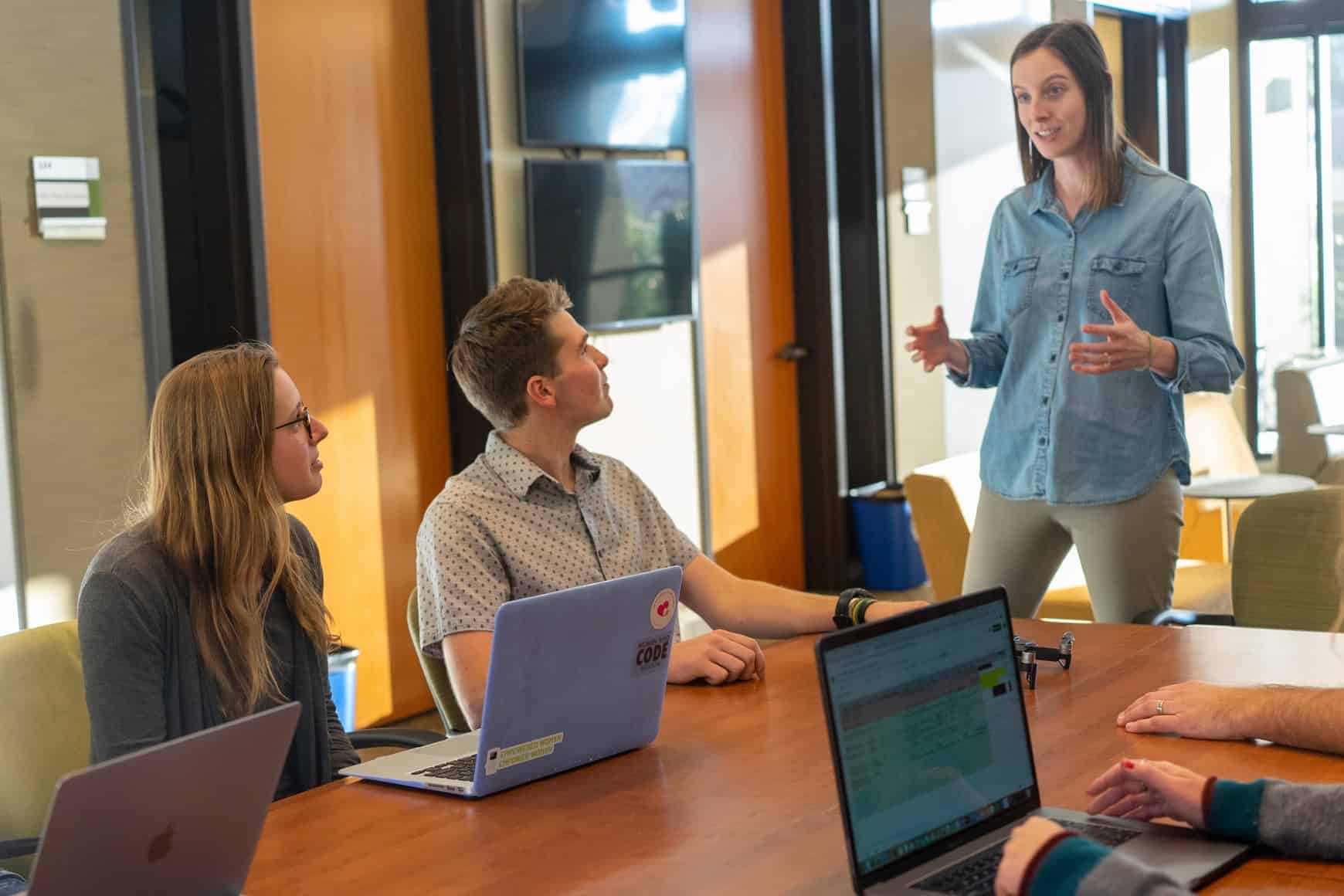How often do you find yourself saying, “Employees are my business’s most valuable asset”?
This statement couldn’t ring truer.
Customer loyalty, a well-rounded business plan, and premium products all influence success, but your business’s greatest assets are your employees. They are your competitive advantage and contribute to your business’s growth.
That’s why understanding the employee lifecycle and knowing how to engage with staff members in each stage of the cycle is paramount to boosting productivity and driving revenue – especially when you’re running a remote team that needs extra attention to stay engaged.
In this post, I break down each phase of the employee lifecycle and share some actionable tips to increase employee engagement, productivity and work quality.
Table of contents:
1. 6 Stages in the Employee Lifecycle: How to Measure & Improve Each of Them

Every employee goes on a journey, passing through specific phases with your business. The cycle starts on the day your business draws their attention, right through to the day they hand in their notice and leave your company.
The Employee Lifecycle Model (ELC) is similar to the customer journey roadmap, where you outline the entire experience your customers go through when interacting with your brand, from the awareness stage to purchase and beyond.
If you can measure, refine and optimise the customer journey, why not do the same for your employees? After all, valuing your employees is as important as valuing your customers.
Some people might argue that employees are even more important than customers as their role extends far and beyond the mere ability to execute the tasks you delegate.
Personally, I agree that putting employees first is good business. As Richard Branson said, “Clients do not come first. Employees come first. If you take care of your employees, they will take care of the clients.”
Although the customer remains king to any thriving business, your employees are your brands’ ambassadors and carry out your mission. Your employee experience influences your customer experience. Therefore, happy employees make happy customers, which drives business success.
With that being said, let’s take a closer look at each stage in the employee lifecycle and see the best tactics for optimising your team experience.
1.1. Brand Attraction

The brand attraction (also known as “proactive recruitment” or “employer branding”) stage is the first stage of the employee lifecycle.
Essentially, your relationship with an employee starts the very second they become aware of your brand. For this reason, you need to have a great employer branding strategy in place.
According to Leftronic, “50% of candidates wouldn’t work for a company with a bad public image”, and “55% of the people seeking a job would stop applying after reading negative reviews about the organisation”.
That’s why you need to become an employer of choice and make job candidates eager to work for you.
- How to measure the brand attraction stage
At the heart of a great employer branding strategy should be social media and review sites such as LinkedIn, Glassdoor, or Indeed.
To understand how people feel about you as an employer, start by tracking your ratings on these platforms and monitoring mentions in social media channels.
An important key metric you should be tracking at this stage of the employee lifecycle is your Job Offer Acceptance Rate (OAR).
Here’s the formula to measure it:
Offer acceptance rate = Number of offers accepted % Number of offers
As a general rule, a good offer acceptance rate should be above 90 percent, showing that there’s a good match between your business and candidates’ expectations.
- How to improve the brand attraction stage
There are a few key tips you can follow to build a great employer brand and make your business more appetizing to top talent.
Start by raising brand awareness to keep your brand top of mind with potential employees. Make sure you create and maintain a positive company culture focused on employees’ health and well-being.
Even if you’re running a home-based remote business, you can get a professional virtual office to improve your brand’s reputation and increase your chances of attracting the best talent.
You can also share insights into your company culture using social media and popular recruitment platforms.
1.2. Recruitment

The employee recruitment stage is the second stage of the employee lifecycle, where you seek the right people you want to be on your team.
Now, it’s time to start focusing on screening and interviewing candidates and give them a chance to get a closer look at your business.
Even if you don’t have the luxury of a full-time recruiter or HR work experience, this stage does not need to become an uphill battle. With the right strategy in place, you will be able to conduct a well-planned, smooth, thoughtfully crafted recruitment process.
I have already shared some tips on how to recruit and hire top talent for your remote business. You can find them here.
- How to measure the recruitment stage
Recruitment has a wealth of KPIs to measure effectiveness and success. For example, time to hire lets you know how long it takes to fill a vacancy, from the moment you advertise the position to the moment a candidate accepts it.
Depending on factors such as your industry and the position you’re advertising, a good time to fill can go anywhere from two to nine weeks.
Here’s the formula to calculate time to fill:
Time to Fill = Days to fill each open role % Total hires
Another valuable metric to measure recruitment success is the cost per hire that shows how much it costs your business to fill an open job position.
You can use this formula to calculate your cost-per-hire:
Cost per hire = Total recruitment cost % Total number of hires
According to Majer Recruitment, Australia’s average cost per hire is $17,841 for mid-level hires and $9,772 for entry-level positions.
- How to improve the recruitment stage
In order to improve the recruitment process, I suggest adding your Employee Value Proposition (EVP) in your job posting. Emphasise how the job meets the candidate’s needs and outline the unique benefits they receive in return for their skills and experience.
You may also want to try out more recruitment websites instead of sticking to only one major platform.
Remember, if you are hiring remotely, you’re in luck. Remote hiring allows you to access the global talent pool and find the finest talents anywhere in the world.
1.3. Onboarding

Onboarding is the next phase in the employee lifecycle encompassing everything needed to get your new team members well-adjusted to your company’s work environment.
As a business owner, you want to create an onboarding process that leads to bliss and job satisfaction.
That’s why you need to focus on communicating all the aspects of the employees’ new position, from handling specific tasks to introducing them to the team.
- How to measure the onboarding stage
A great metric to measure onboarding success is time-to-full productivity. This metric refers to the time it takes a new hire to properly complete every aspect of their job.
As new employees ramp up, measuring time-to-full productivity can be a bit tricky. Maybe the quickest and most efficient way to measure onboarding success is to establish performance milestones based on a 30-60-90-120 day plan and decide how to measure new employees’ progress against these milestones.
Another metric you may want to consider at this stage of the employee lifecycle is new hire turnover (the number of new hires leaving your company).
To calculate new employee turnover rate, use the following formula:
First-year turnover rate = (Number of employees who leave your business after less than a year % Total number of employees who left) X 100
You can also adjust this formula to calculate your turnover rate for a specific period (e.g. 90-day or 180-day turnover).
- How to improve the onboarding stage
Onboarding should be a continuous process without it coming to a stop after a specific period. This is a great way to keep employees on track and set them up for long-term success.
Make sure you clearly communicate the company’s vision and values. Outline your expectations from the very beginning and clarify any questions your new employees may have.
Even if you operate remotely, I suggest you schedule face-to-face meetings using professional meeting rooms for regular follow-ups (if your employees live in an area within commuting distance from you).
1.4. Development

At this stage, you need to start nurturing employees’ skills by investing in learning opportunities.
This is an essential phase in the employee lifecycle that can take your business to new heights.
The development stage is based on the concept of continuous growth when you design realistic and achievable career paths and empower your team members to achieve higher goals.
- How to measure the development stage
To find out how many employees are moving up within your company, it’s a good idea to measure your promotion rates (the total number of employees internally promoted and transferred to a new position).
An employee promotion is a recognition for their contribution to your business’s success and helps you reduce attrition and boost productivity.
Here is the formula to calculate your promotion rate:
Promotion rate = (Total number of promotions during a specific period % Total number of employees) X 100
While a high promotion rate indicates your business has experienced lots of internal changes, a low promotion rate may raise questions as to why your employees are not being promoted.
Do they lack the necessary skills to do the job, or you simply didn’t put the effort and attention into promoting your best employees?
- How to improve the development stage
You can improve the development stage of your employee lifecycle by giving your employees the chance to attend seminars or conferences and actively participate in learning opportunities.
Encourage each of your team members to build a professional action plan and identify the additional abilities they need to reach their career advancement goals.
You should also encourage knowledge sharing and build a workplace focused on ongoing education.
1.5. Retention

Employee retention refers to the ability of a business to keep employees and avoid employee turnover (a costly, maddening, and time-consuming problem to have).
After Covid-19 hit and many organisations shifted to remote work, the competition for top tech talent has become fiercer than ever.
That’s why you need to ramp up efforts to retain your most valuable employees by keeping them happy, engaged, and motivated.
Your company culture goes a long way in this phase of the employee lifecycle. If you foster a positive culture, you increase the likelihood that employees will stay with your business for years to come.
- How to measure the retention stage
At this stage, the retention metric will tell you exactly how many employees choose to stay with your business and how many leave over a specific period of time.
The basic formula for calculating employee retention is:
Employee retention rate = (Total number of employees ﹣ Total number of employees who left) % Total number of employees. Then, multiply the result by 100.
As a general rule, a good employee retention rate should be 90 percent or higher.
- How to improve the retention stage
There are many great strategies you can implement to improve your retention rate and make sure your best employees stick around.
Spare a few minutes to read this post! It will provide you with seven golden nugget tips for retaining your key people.
As a rule of thumb, the more you seek out employee feedback and measure their morale, the more you keep your team happy and engaged and the more you increase your retention rates.
1.6. Separation

Separation is the final stage of the employee lifecycle. Even if you have an excellent retention rate, there comes a point where your employees decide to continue their careers elsewhere.
Even so, an employee departure provides you with a great opportunity for learning and potentially turning them into brand ambassadors.
Happy leavers can always come back at some point as “boomerang employees” or recommend your business to family and friends.
- How to measure the separation stage
When employees reach this stage, it is essential that you have an understanding of why people have decided to leave.
If you understand their reasons for resigning, you are more likely to encourage others to stay.
Your opportunity to gain context around why an employee is leaving comes during the exit interview.
Ask them why they are leaving their position and what led them to the decision to leave. The exit interview also provides you with a great opportunity to find out how they feel about management and get honest feedback.
- How to improve the separation stage
Make sure the employee who is resigning does not leave unexpectedly, causing major disruption and affecting other team members.
During the interview, try to dig deep into what really caused the resignation.
Almost all employees say they are leaving because they have another job offer. But the key question is why they started seeking a new job and why they prefer that role to a position within your company.
Conclusion: In business, no man is an island. As your company grows, you need to start delegating tasks and build a trustworthy team that can help you set your business up for success.
That’s why you have to be aware of each phase in your employees’ journey. The employee lifecycle provides you with a great opportunity to improve your team experience and make it richer, more satisfactory and rewarding.
Great employees make a great business. If you’re running a remote startup, there’s no better way to attract, hire and retain top talent than getting an exclusive virtual office. It would be a pleasure for us to provide you with all the tools you need to improve your business’s reputation and credibility and build a great employee experience strategy!
